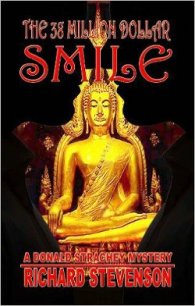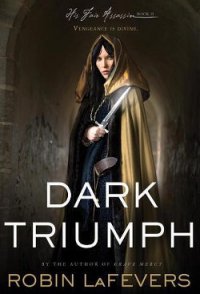Congo - Crichton Michael (книги регистрация онлайн бесплатно .TXT) 📗
Elliot did think about it, and he discussed it at the Project Amy staff meeting at ten o’clock. They considered possible industrial applications for apes, and possible advantages to employers, such as the lack of unions and fringe benefits. In the late twentieth century, these were major considerations. (In 1978, for each new automobile that rolled off the Detroit assembly lines, the cost of worker health benefits exceeded the cost of all the steel used to build the car.)
But they concluded that a vision of “industrialized apes”
was wildly fanciful. An ape like Amy was not a cheap and stupid version of a human worker. Quite the opposite: Amy was a highly intelligent and complex creature out of her element in the modern industrial world. She demanded a great deal of supervision; she was whimsical and unreliable; and her health was always at risk. It simply didn’t make sense to use her in industry. If Morikawa had visions of apes wielding soldering irons on a microelectronic assembly line, building TVs and hi-fl sets, he was sorely misinformed.
The only note of caution came from Bergman, the child psychologist. “A quarter of a million is a lot of money,” he said, “and Mr. Morikawa is probably no fool. He must have learned about Amy through her drawings, which imply she is neurotic and difficult. If he’s interested in her, I’d bet it’s because of her drawings. But I can’t imagine why those drawings should be worth a quarter of a million dollars.”
Neither could anyone else, and the discussion turned to the drawings themselves, and the newly translated texts. Sarah Johnson, in charge of research, started out with the flat comment “I have bad news about the Congo.”*
For most of recorded history, she explained, nothing was
*Johnson's principal reference was the definitive work by A. J. Parkinson. The Congo Delta in Myth and History (London; Peters. 1904).
known about the Congo. The ancient Egyptians on the upper Nile knew only that their river originated far to the south, in a region they called the Land of Trees. This was a mysterious place with forests so dense they were as dark as night in the middle of the day. Strange creatures inhabited this perpetual gloom, including little men with tails, and animals half black and half white.
For nearly four thousand years afterward, nothing more substantial was learned about the interior of Africa. The Arabs came to East Africa in the seventh century A.D., in search of gold, ivory, spices, and slaves. But the Arabs were merchant seamen and did not venture inland. They called the interior Zinj-the Land of the Blacks-a region of fable and fantasy. There were stories of vast forests and tiny men with tails; stories of mountains that spewed fire and turned the sky black; stories of native villages overwhelmed by monkeys, which would have congress with the women; stories of great giants with hairy bodies and flat noses; stories of creatures half leopard, half man; stories of native markets where the fattened carcasses of men were butchered and sold as a delicacy.
Such stories were sufficiently forbidding to keep the Arabs on the coast, despite other stories equally alluring: mountains of shimmering gold, riverbeds gleaming with diamonds, animals that spoke the language of men, great jungle civilizations of unimaginable splendor. In particular, one story was repeated again and again in early accounts: the story of the Lost City of Zinj.
According to legend, a city known to the Hebrews of Solomonic times had been a source of inconceivable wealth in diamonds. The caravan route to the city had been jealously guarded, passed from father to son, as a sacred trust for generation after generation. But the diamond mines were exhausted and the city itself now lay in crumbling ruins, somewhere in the dark heart of Africa. The arduous caravan routes were long since swallowed up by jungle, and the last trader who remembered the way had carried his secret with him to the grave many hundreds of years before.
This mysterious and alluring place the Arabs called the Lost City of Zinj. * Yet despite its enduring fame, Johnson could find few detailed descriptions of the city. In 1187 Ibn Baratu, an Arab in Mombasa, recorded that “the natives of the region tell… of a lost city far inland, called Zinj. There the inhabitants, who are black, once lived in wealth and luxury, and even the slaves decorated themselves with jewels and especially blue diamonds, for a great store of diamonds is there.”
In 1292, a Persian named Mohammed Zaid stated that “a large [the size] diamond of a man’s clenched fist.. was exhibited on the streets of Zanzibar, and all said it had come from the interior, where the ruins of a city called Zinj may be found, and it is here that such diamonds may be found in profusion, scattered upon the ground and also in rivers
In 1334, another Arab, Ibn Mohammed, stated that “our number made arrangements to seek out the city of Zinj, but quitted our quest upon learning that the city was long since abandoned, and much ruined. It is said that the aspect of the city is wondrous strange, for doors and windows are built in the curve of a half-moon, and the residences are now overtaken by a violent race of hairy men who speak in whispers no known language
Then the Portuguese, those indefatigable explorers, arrived. By 1544, they were venturing inland from the west coast up the mighty Congo River, but they soon encountered all the obstacles that would prevent exploration of central Africa for hundreds of years to come. The Congo was not navigable beyond the first set of rapids, two hundred miles inland (at what was once Lйopoldville, and is now Kinshasa). The natives were hostile and cannibalistic. And the hot steaming jungle was the source of disease-malaria, sleeping sickness, bilharzia, blackwater fever-which decimated foreign intruders.
The Portuguese never managed to penetrate the central
*The fabled city of Zinj formed the basis for H. Rider Haggard’s popular novel King Solomon’s Mines, first published in 1885. Haggard, a gifted linguist, had served on the staff of the Governor of Natal in 1875. and he presumably heard of Zinj from the neighboring Zulus at that time.
Congo. Neither did the English, under Captain Brenner, in 1644; his entire party was lost. The Congo would remain for two hundred years as a blank spot on the civilized maps of the world.
But the early explorers repeated the legends of the interior, including the story of Zinj. A Portuguese artist, Juan Diego de Valdez, drew a widely acclaimed picture of the Lost City of Zinj in 1642. “But,” Sarah Johnson said, “he also drew pictures of men with tails, and monkeys having carnal knowledge of native women.”
Somebody groaned.
“Apparently Valdez was crippled,” she continued. “He lived all his life in the town of Settibal, drinking with sailors and drawing pictures based on his conversations.”
Africa was not thoroughly explored until the mid- nineteenth century, by Burton and Speke, Baker and Living-stone, and especially Stanley. No trace of the Lost City of Zinj was found by any of them. Nor had any trace of the apocryphal city been found in the hundred years since.
The gloom that descended over the Project Amy staff meeting was profound. “I told you it was bad news,” Sarah Johnson said.
“You mean,” Peter Elliot said, “that this picture is based on a description, and we don’t know whether the city actually exists or not.”
“I’m afraid so,” Sarah Johnson said. “There is no proof that the city in the picture exists at all. It’s just a story.”


![[Magazine 1968-012] - The Million Monsters Affair - Davis Robert Hart (серия книг .txt) 📗](/uploads/posts/books/56864/56864.jpg)

